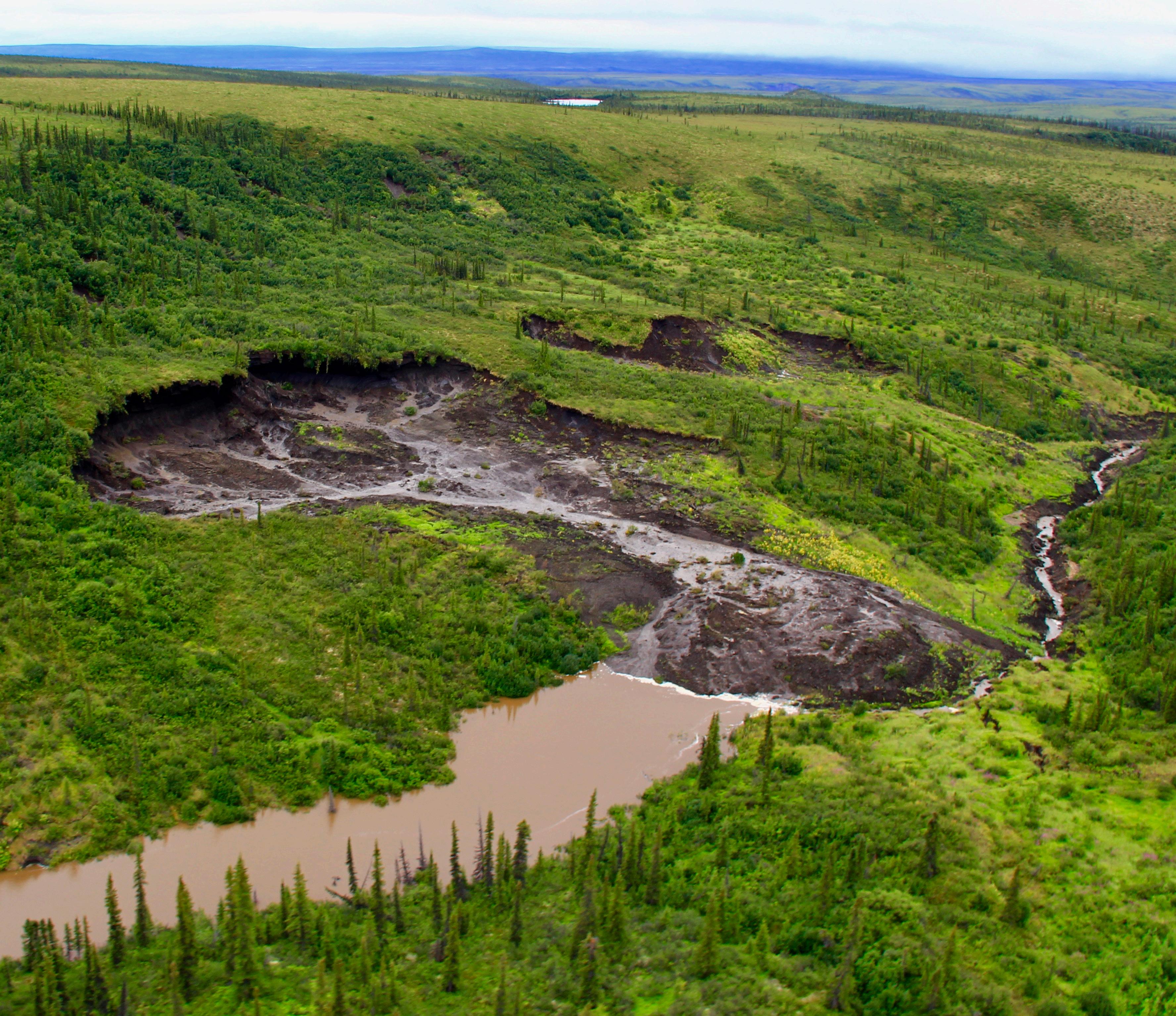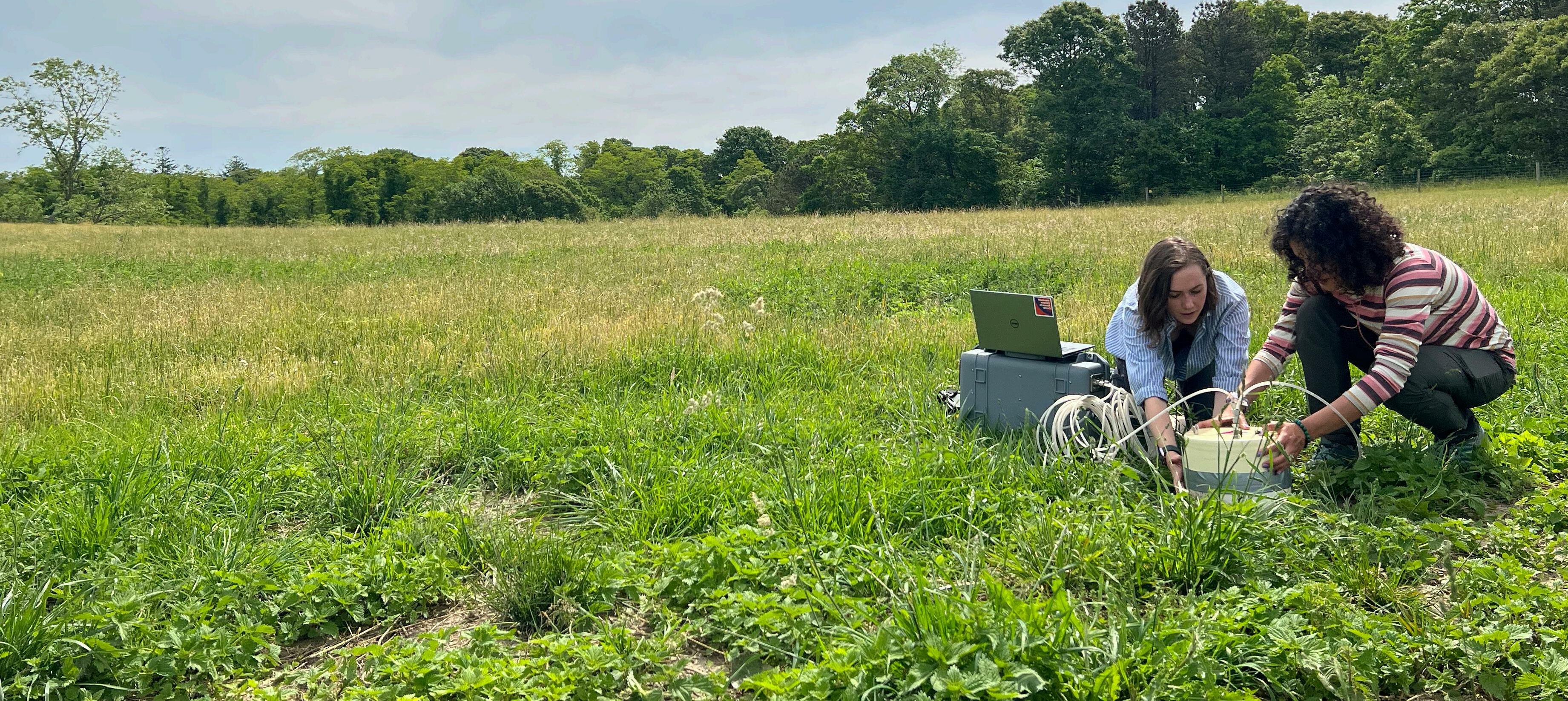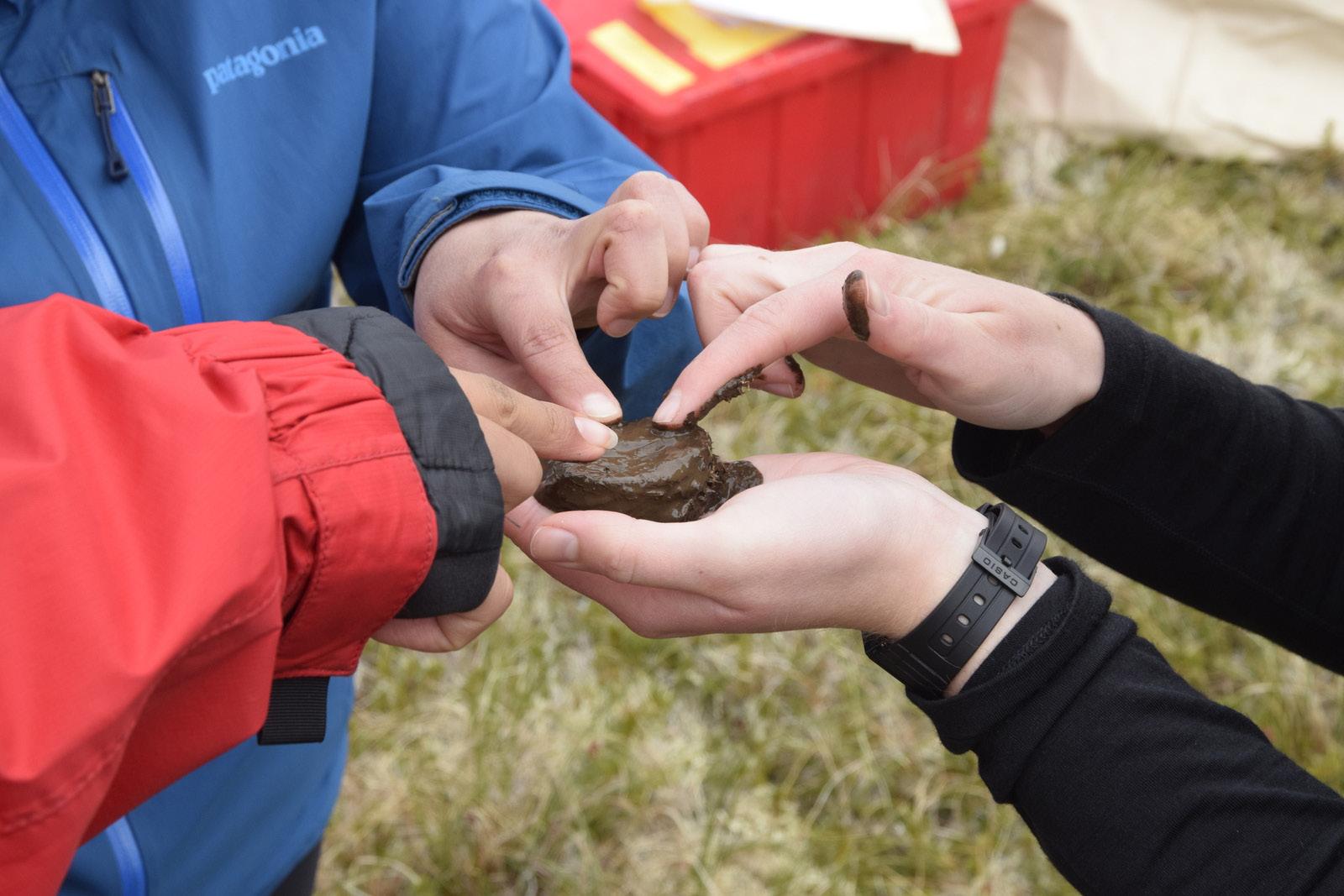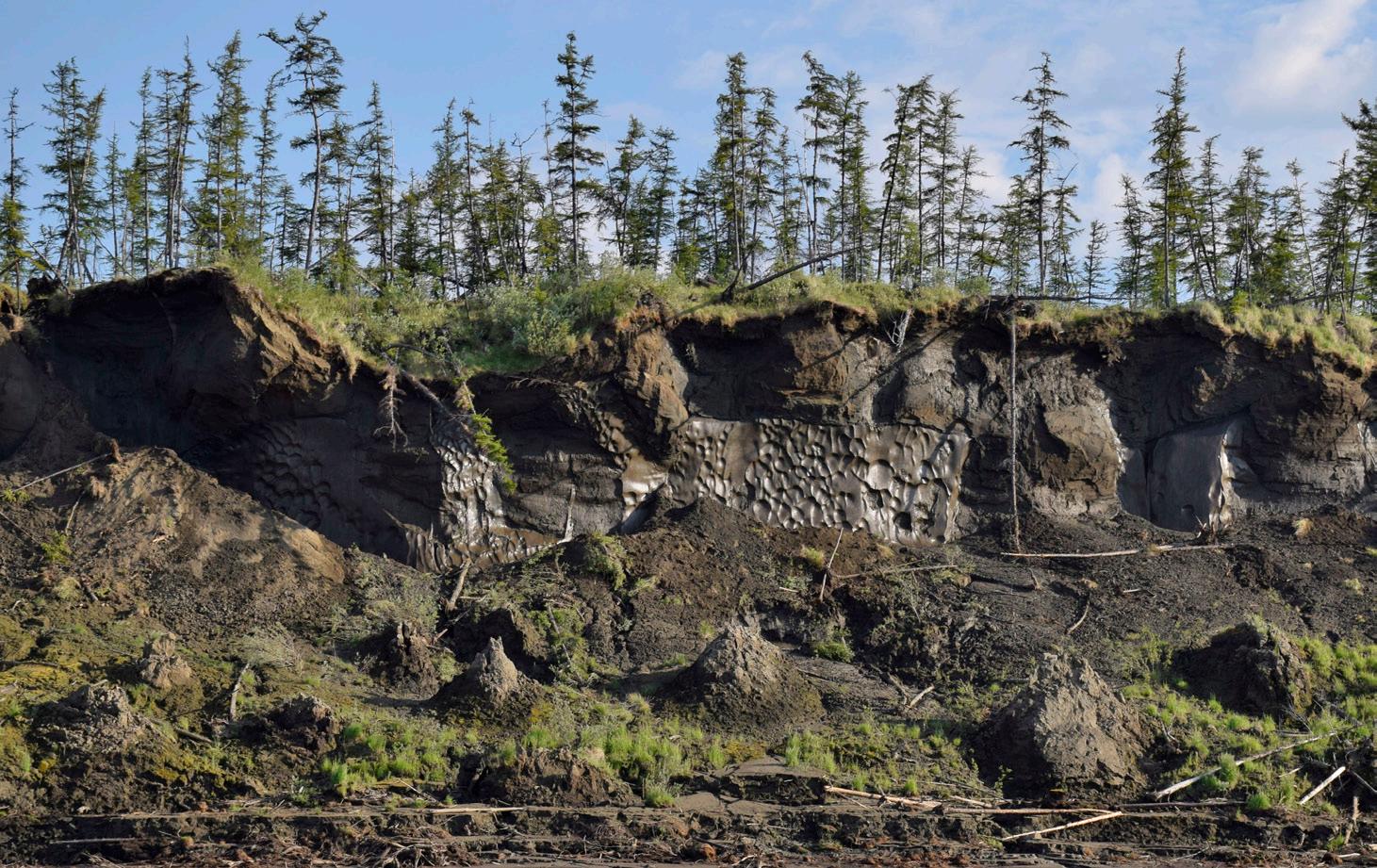

New report maps best path forward for nature-based climate solutions
Nature-based climate solutions like reforestation, climate-smart agriculture, and wetland restoration harness natural processes to reduce greenhouse gas concentrations in the atmosphere and slow climate change. These approaches have substantial and growing support from bipartisan lawmakers, the private sector, and conservation-minded NGOs, but scientific tools to guide implementation and to accurately monitor outcomes are not adequately developed.
To confront that uncertainty and put nature-based climate solutions on a sound scientific footing, several dozen scientists and policy experts gathered in Washington D.C. in June of this year for a workshop sponsored by Indiana University, the U.S. Department of Energy, and the U.S. Carbon Cycle Science Program. The resulting white paper report reviews the current state of knowledge in this field, and describes the necessary research and technology investments to support effective mitigation policy.
According to the report’s lead author, Dr. Kim Novick from the Paul H. O’Neill School of Public and Environmental Affairs at Indiana University, “Nature-based climate solutions can play an important role in slowing the pace of climate change, but only if they are pursued alongside economy-wide decarbonization and guided by the best-available science.”
The white paper authors identify critical gaps in the science needed to support large-scale implementation of nature-based climate solutions and lay out a research agenda to fill these gaps. They also outline a set of principles that should guide future assessments of the effectiveness and viability of naturebased climate solutions. The result is a road map for producing information that will foster successful programs and policies— while avoiding energy wasted on those that do not. Woodwell Senior Scientist, Dr. Jonathan Sanderman attended the gathering in June and contributed to the development of the paper.
“We’re at a unique moment in U.S. climate policy where the hard work of the research science community can be directly and immediately leveraged to help the U.S. fight climate change and become a world leader in implementing nature-based climate solutions.”
The report calls for a ~$1 billion (USD) coordinated investment in a national nature-based climate solution “Information Network” organized around coordinated ground-based experiments and monitoring that can inform rigorously benchmarked maps, model predictions, and protocol evaluations.
According to Dr. Benjamin Runkle, another report co-author and associate professor in the College of Engineering at the University of Arkansas: “Although the investment necessary to generate this information is not small, it is a fraction of the amount already allocated to implementation of nature-based solutions. Investing in sound science to predict, monitor, and verify the benefits of these strategies is fundamental to ensuring their success.”
In addition to their potential to stave off climate change, naturebased solutions also have a range of other benefits, including improving air and water quality, promoting biodiversity, and providing economic opportunities. Many can also help communities adapt to a changing climate and improve resilience of agricultural and food systems.
“There is broad-scale agreement that many nature-based climate solutions benefit people and the environment through co-benefits,” said Dr. Emily Oldfield, a report co-author and agricultural soil carbon scientist with the Environmental Defense Fund. “We should push to incentivize those practices using a wide range of policy tools, while acknowledging there is no one-size-fits-all approach to ecosystem-based climate solutions.”

Successfully implementing nature-based climate solutions will require a big investment in new researchKen Bickoff Faculty Liaison and Public Relations Officer, O’Neill School of Public and Environmental Affairs, Indiana University Sarah Ruiz Science Writer
They keep us cool, we cut them down
Sarah Ruiz Science WriterIn terms of climate mitigation, forests are like green gold—working overtime to cool the planet, while also supporting a wealth of biodiversity. But we have not been saving them as one would a precious asset. Despite pledges to end deforestation, old growth forests are being cut down at alarming rates. And planting new trees is widely prioritized and incentivized over protecting existing forests. Across the board, standing forests are vastly undervalued. This has to change if we are to stand a chance of limiting warming to internationally agreed targets.
Forests are global air conditioners
According to a recent study from scientists at Woodwell and the University of Virginia, tropical forests alone are holding back approximately 1 degree Celsius of warming. About 75% of that cooling effect is due to carbon sequestration. Forests grow, trees lock away carbon in their trunks and roots and shunt it into the soil. The other 25% comes from the innate properties of forests that work to cool vast regions of the globe.

Through photosynthesis, plants release water vapor into the air in a process called evapotranspiration. The vapor contributes to cooling near the ground, as well as cloud formation higher in the atmosphere that reduces incoming solar radiation. The shape of the tree canopy also contributes. So-called canopy “roughness” disrupts air flow above the forest. The more uneven the canopy, the more turbulent the air, which disperses heat away from the surface. In the tropics, evapotranspiration and canopy roughness are high, which means that surface temperatures remain relatively low, with the heat dispersed throughout the deep atmosphere.
Forests also naturally produce molecules called biogenic volatile organic compounds (BVOC), which can either contribute to cooling by encouraging the formation of clouds, or to warming by creating ozone and methane. In the tropics, the net effect of these chemicals is cooling.
The cumulative result of these properties is that when forests are removed, the land around them begins to heat up even faster, which can increase the
frequency of extreme heat and drought events. Without forests, some regions will become a lot less resilient to sudden shocks. And the release of carbon contributes to global warming which further exacerbates hot, dry conditions.
“Forests act like air conditioners,” says Woodwell Assistant Scientist, Dr. Ludmila Rattis, who studies the impacts of deforestation on agriculture in Brazil. “Deforesting in the face of climate change is like getting rid of your air conditioners before an upcoming heatwave.”
Not all forests are created equally
Protecting forests, and maintaining the cooling services they provide, is vital to limiting warming. But, with forests covering 30% of the Earth’s land, prioritizing protection is a massive task. And when it comes to carbon storage, not all forests are equally valuable. Older, healthier forests tend to have a more secure hold on their carbon.
“Mature forests have higher biodiversity and create their own microclimate,” says Woodwell Associate Scientist, Brendan Rogers. “They’re more resistant to
top left: Woodwell researchers sample carbon fluxes from a farm in Massachusetts. / photo by Nichole Chapman top right: Canopy tree in a tropical rainforest. / photo by Jeremy Bezanger
Standing forests are our best natural climate solution. So why aren’t we treating them that way?
drought and other types of disturbance. And because of that, they tend to be more stable in the face of environmental perturbations over time.”
New research from Woodwell and Griffith University has developed a method of identifying high-value forests using satellite imagery. Estimating the metric of “forest stability” through satellite data on the light reflected by vegetation and a water stress index of the tree canopy, researchers were able to determine gradients of stability within forest patches in the Amazon and boreal forests.

Using a gradient of forest stability allows for a better prioritization of forest protection strategies based on their carbon value.
“The first priority is to protect stable forests from further human disturbance,” says paper co-author Dr. Brendan Mackey. “The second priority is to identify forest areas where restoration efforts will be most cost effective.”
Guarding the forests that guard our future
But if the state of existing forests is any indication, forest protection continues to be deprioritized. Many wildfires are left to burn unless they threaten human settlements. Governments continue to incentivize deforestation for development or agricultural expansion. Indigenous and local communities are not compensated for their work stewarding their territories and keeping forests safe. And the warmer the planet gets, the more susceptible even protected forests become to drought, fire, and disease.
Research has shown that stewarding standing primary forests, and reviving degraded ones, represents the greatest opportunity for near-term carbon storage and removal. A study of global landbased carbon storage potential found that improved management of existing forests alone could store approximately 215 billion metric tons more than they currently do.
Protecting forests is cost effective, too. For example, in the United States, investing in fire fighting in Alaska’s boreal forests would require just $13 per ton of CO2 emissions avoided. That’s easily on par with other mitigation strategies like onshore wind or solar energy generation.
Effective strategies for protecting forests already exist, they’ve just been suffering from a lack of force—and often funding— behind their implementation. For example, forest carbon markets—where landowners and forest stewards are paid to protect standing forests that are otherwise vulnerable to deforestation— have the potential to keep forests safe while offsetting emissions from other sectors. But nascent carbon markets are inefficient, with weak standards for verifying the quality of credits being sold, and lacking the transparency needed to ensure credits are actually reducing overall emissions, rather than greenwashing carbon-intensive business practices.
Credits are also priced incorrectly for their relative climate value—the market currently values reforestation credits more highly, reducing incentive for landowners to conserve standing, old-growth forests when there is a better livelihood to be made in legally deforesting land for other uses. A truly effective carbon markets system would require large investments in science that can verify credit standards.
Forests are like our global carbon savings accounts—when we cut them down, we’re drawing out money and limiting our ability to collect interest and keep growing our funds. Successful mitigation can’t be accomplished without taking the full value of forests into account and strengthening policies to reflect that. If they aren’t, the planet will pay a far greater price for it as temperatures rise.
“We can’t afford to keep cutting forests. We need to reduce emissions now, and protecting forests is one of our best available solutions. Despite the obstacles, it’s worth the investment,” says Dr. Rogers.
The critical missing expense in global climate budgets
A major emitter is being left out of the global climate budget, and Arctic communities are already feeling the impacts.
 Katie Constantine Communications Intern
Katie Constantine Communications Intern
A 2022 Intergovernmental Panel on Climate Change (IPCC) report confirms that the Earth is on track to warm 1.5 degrees celsius by 2040. Warming beyond this will cause global issues like struggling coral reefs, catastrophic storms, and extreme heat waves. The international community has developed a global carbon budget that tracks how much carbon can be added to the atmosphere by human-caused emissions
before we push warming past 1.5 and even 2 degrees. It functions much like a household budget—where spending more than you earn can jeopardize your stability and comfort.
With the carbon budget, that means balancing how much carbon is released into the atmosphere with how much is being stored by natural sinks. According to the IPCC, the world needs to wean itself off of “spending” down that budget
as we rapidly approach 2 degrees of warming.
Permafrost is missing from the budget
But IPCC’s budget calculations aren’t factoring in a major source of emissions— permafrost thaw. Massive amounts of carbon are stored in frozen Arctic soils known as permafrost. As permafrost thaws, that carbon is released into the atmosphere in the form of carbon dioxide
left: Lidar image of a forest. Lidar is a form of remote sensing that can be used to monitor changes on a landscape. / image courtesy of Manoela Machado above: Nunapitchuk, Alaska. / photo by Rachael Treharne
and methane. Scientists estimate that emissions from permafrost thaw will range from 30 to 150 billion tons this century.
Despite being on par with top-emitting countries like India or the United States, permafrost thaw is not included in the global carbon budget. It has historically been excluded because of gaps in data that make existing estimates of emissions less precise. Dr. Max Holmes, President of Woodwell Climate Research Center, says it’s “especially alarming… that permafrost carbon is largely ignored in current climate change models.” That’s because permafrost thaw emissions could take up 25–40% of our remaining emissions budgeted to cap warming at 2°C. Imagine leaving the cost of rent out of your household budget. It doesn’t mean you don’t have to pay it, it just means you won’t be prepared when that bill arrives. Excluding permafrost thaw also means that projections of the rate of warming will be off. The unaccounted carbon will speed up warming, reducing the amount of time we have to avoid the worst impacts of climate change.
Permafrost thaw is already negatively impacting Arctic residents, especially Indigenous communities. In 2019, a Yup’ik community that has lived in Newtok, Alaska for hundreds of years had to begin moving to higher, volcanic ground because the thawing permafrost under their town was causing disastrous floods and sinking infrastructure. Woodwell Arctic program director and senior scientist, Dr. Sue Natali, who studies permafrost thaw in Yup’ik territory, says “it’s a place where permafrost is on the brink of thawing, and will be thawed by the end of the century, if not much sooner.”
Since permafrost spans multiple countries, it has been difficult to determine who should take responsibility for it. Consequently, there is currently little government framework for adaptation. The Yup’ik people had to

reach out to a variety of government agencies and lived without plumbing for decades before the federal government finally awarded them support for relocation. The community paid a heavy price for it, though. Without proper policy in place to manage climate relocation, they had to bargain for government assistance, and in the end, turned ownership of the land they were leaving over to the U.S. government.
It took sixteen years from when Congress agreed to assist the Yup’ik community to when their promises were put into action. While scientists, like the ones
spearheading Woodwell’s Permafrost Pathways program, are monitoring and modeling thaw to better prepare people for the damage it can cause, vulnerable communities do not have sixteen years to wait for assistance and relocation.

If permafrost thaw continues to be overlooked by government agencies, then it will remain difficult to prevent the Earth from warming beyond 2°C and to support frontline communities most affected by it. Tackling permafrost thaw for both Arctic communities and the planet will require a coordinated international effort.
above top: Examining a permafrost sample in the field. above: A slope eroding due to permafrost thaw in Siberia. / photos by John Schade
In the news: highlights
An article from Mongabay quoted Dr. Brendan Rogers about a new study he co-authored, mapping mature and old-growth forests in the continental US.
The Boston Globe quoted Dr. Jen Francis on the link between climate change and increased precipitation. Mongabay also quoted her in a similar article on the connection between Arctic sea ice loss and increasingly strong El Niño events. And she was quoted on the jet stream, extreme weather, and the climate in an article from Inside Climate News about the megadrought in the northern hemisphere.
Chatham House published an animated explainer describing research in collaboration with Woodwell that showed why burning biomass is not zero carbon.
IPAM published an article quoting Dr. Marcia Macedo on the ongoing monitoring research that showed air quality in the Xingu Indigenous territory is 53 times worse than WHO recommendations (Portuguese).
Cabin Radio reported on a recent publication from Dr. Scott Zolkos, which showed that streams affected by permafrost slumps carry substantially more carbon than typically found in other streams flowing through permafrost landscapes.
Drs. Peter Frumhoff, Carly Phillips, and Brendan Rogers published an opinion piece in Scientific American, discussing how stopping Alaskan wildfires can slow climate change.
Dr. Heather Goldstone was quoted in a New York Times article about a TV program for preschoolers that talks about climate change.
Dr. Zach Zobel spoke with Wellington’s Chris Goolgasian on a webinar presentation on socioeconomic risks associated with climate change.
Dr. Anna Liljedahl was quoted in an ASU News article covering a recently-funded project she collaborates on, which aims to train Arctic scientists to use AI for data processing.
Farm Futures quoted Dr. Jon Sanderman to provide context for an article on soil carbon monitoring technology.
CTV News (Canada) featured a piece based on a paper, co-written by Dr. Anna Liljedahl, on what is causing the disappearance of Arctic lakes.
Dr. Foster Brown was quoted in a UOL (Universo Online) opinion piece on deforestation in Acre. (Portuguese)
Online free permafrost course launches new Woodwell partnership
Margaret Lin Communications CoordinatorWoodwell Climate Research Center has released its first course in partnership with FutureLearn, a UK-based global social education platform that delivers learning through online courses, partnering with more than 260 universities and brands. FutureLearn aims to transform access to education for their diverse network of over 17 million learners with courses that empower them to solve the world’s biggest challenges, and Woodwell will be developing additional future courses through the partnership that address other areas of our scientists’ expertise, such as forest carbon and risk assessment.
The newly released course, Thawing Permafrost: Science, Policy, and Environmental Justice in the Arctic, represents years of Woodwell scientists’ research and experience in permafrost regions. It features Arctic Program Director Dr. Sue Natali and Associate Scientist Dr. Brendan Rogers, who also lead Woodwell’s Permafrost Pathways project, as well as Woodwell’s Chief Communications Officer Dr. Heather Goldstone. Over the 4 weeks of the course, learners are introduced to advanced geology and climate science concepts relating to permafrost, translated into an accessible, go-atyour-own-pace experience.
“Permafrost thaw is an underappreciated problem, which unfortunately means that its impacts continue to be underestimated,” said Dr. Brendan Rogers. “While I’m excited for people to learn more about it through the course, my biggest hope is that all of those people will then share what they learned with someone else, and help expand the conversation.”
Offered free of charge on FutureLearn’s online platform, the course is designed for a broad audience, from policy influencers to business leaders, teachers, activists, and anyone interested in climate change.
“Unfortunately, climate change may not be a significant part of people’s formal education. But we all need to understand what’s going on,” said Woodwell Chief Communications Officer, Dr. Heather Goldstone. “With FutureLearn, we can share our insights and expertise with a large, diverse audience, delve into content more deeply than we ever could in a webinar, and provide a more interactive and flexible experience for learners.”
The course is open now for enrollment and on-demand learning, and Woodwell will be offering a facilitated session immediately after COP, with moderators available to answer learner questions.
| woodwellclimate.org/permafrost-course



